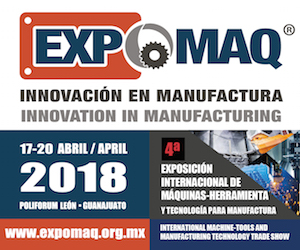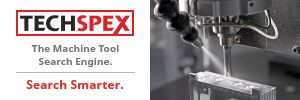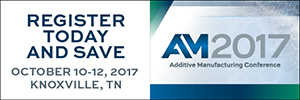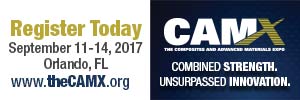“Lean†is a strategy. It is essentially about reducing waste wherever it occurs in the organization. Excess inventory. Unnecessary effort by people or machines. Duplicated data. Out! —along with the costs associated with those wastes.
Product lifecycle management (PLM) is a concept. It is essentially about managing product data from the womb (product development) to the tomb (“the dump” or recycling). Key to PLM is information technology (IT) to manage the data and perform the associated business processes effectively, making both data and processes available to users within a company and throughout the supply chain.
“The implementation of lean has been limited to primarily production and supply chain operations. Very few companies have successfully implemented lean in the product development process,” says Marc Lind, vice president of Aras Corp. (Lawrence, MA; www.aras.com). But that’s changing, he points out, suggesting that it is “now moving upstream into product development, which is a logical extension of the operation strategy.”
PLM contributes to lean, says Ed Miller, president of the Ann Arbor-based market research firm CIMdata (www.cimdata.com). “PLM provides the environment to manage business processes: define them, establish them, and then manage and provide metrics on them.”
LEAN INTO PLM
Lean initiatives, explains Peter Schmitt, vice president, of marketing communications, for Dassault System in the Americas (Troy, MI; www.3ds.com), were initially applied to manufacturing: the manufacturing execution side, not the manufacturing planning side. However, he suggests, “If you drive the concepts and principles of lean up the chain of product development, you’re coming to manufacturing planning, and from there to the product design. The further up the product lifecycle, the bigger the benefits you get.” It’s that old saw: A mistake detected in design costs $1; in manufacturing planning, $100; in production, $1,000.
No surprise then that companies are beginning to take lean a step further, that is, into product development. However, there’s a hitch. Product development has some inherent principles that don’t quite mesh with manufacturing and manufacturing engineering, says Lind. For example, production and supply chain processes are both standardized and transaction-oriented; lots of units run through “standardized work.” That doesn’t happen in product development and collaboration. Creativity is hardly a standardized process.
Then there’s PLM. Schmitt’s colleague, Bob Axtman, director of marketing worldwide for Delmia Corp. “While you can apply lean to individual facets of manufacturing without changing your whole business paradigm, PLM is a change in business methodology, incorporating both product and process together in a unified initiative.” Adds Miller, “People don’t pursue PLM in a vacuum. They generally have organizations with serious competitive issues.” These might be issues revolving around cost, improving product innovation, or getting products to market faster. Companies might look at these as globalization strategies cost reduction strategies or time-to-market strategies, eventually alighting upon lean strategies. “There are all sorts of pressures that people respond to with various strategies. PLM is one of the primary enablers for all of those strategies,” continues Miller.
Says Schmitt, “the product development process goes hand-in-hand with PLM deployment.” This is because product development—lean, too—requires data management, which Miller describes as: “Let me understand the data, let me get a better handle on the data, let me provide more integrity around the data, and let me ensure that people have access to the right data, at the right time, and so on. What that has evolved to is a recognition that unless we’re managing the processes that people use to access, modify and update data, we haven’t addressed the problem very well.” In other words, PLM has evolved from an IT system for managing data to an IT system to help manage the processes that are sitting on top of those data.
There are certain basic truths in product development that fit nicely with PLM and sound like lean tenants. The key one is that effective product development means everybody involved shares the same set of data. In reality, that often doesn’t happen. For example, few companies refer to a single bill of materials (BOM). Different disciplines within the organization, as well as the extended enterprise, typically have their systems to view a BOM. The systems are not connected. A change in one is not reflected in the others. Folks in product design, purchasing, logistics, manufacturing, and so on have their focus on the same data—data that gets duplicated and goes out of synch as changes are made throughout the extended enterprise. How un-lean. Lean speaks of waste in unnecessary components, parts, inventory, and so on. It’s the same with data, says Schmitt. “Don’t duplicate data. Not only is it expensive, it can introduce errors and, with that, additional costs and time delays.”
PLM, as the single source for a product definition, offers a way to collaborate, share, and exchange such data—without duplicating information or redoing tasks because product data got out of sync. “These are all aspects where PLM is a system for lean in eliminating waste, eliminating the risk of errors, and eliminating wasted time,” says Schmitt. “You can have two views of the BOMs without having two BOMs. Because of that, you’re optimizing the time it takes to design and develop a product.”
PLM AS A LEAN SYSTEM
This all begs the question: How do you actually implement lean in product development? For starters, says Lind, embed deliverables, triggers, and lean strategies upstream. Investigate the lean initiatives of manufacturing and supply chain early in the product development process; don’t just develop a product in isolation and then throw it over the wall to manufacturing. For instance, manage tooling and manufacturing process definitions during product development. Likewise, include quality management in product development. “If you’re having a lot of quality problems, it’s very difficult to run a lean line,” muses Lind.
When developing a new product, Lind says designers and engineers should ask a litany of questions throughout the product design process, such as:
- Is the new product part of an existing lean product family, or is it a new lean product family? If the former, is the product going to draw on existing value streams?
- Should the existing value stream be extended, divided, or otherwise modified?
- If this product requires new tooling, has quick changeover been incorporated as part of the tooling selection or design process?
- In sourcing, will purchases go to preferred suppliers qualified for lean deliveries?
- Is poka yoke (mistake proofing) integrated into the product development process for the upstream manufacturing processes?
- A PLM system can ensure that such questions are asked at relevant times during product development. “Lean is about process; it’s not about activity,” says Lind. “You want to manage the overall process and have visibility, so you know what’s tracking and what needs attention. These are fundamental principles on the shop floor. You want the factory to talk to you. It should be self-evident when there’s a problem. And you want the same in product development.”
One way to get that visibility is through dashboards or some sort of visual feedback system. For instance, the Aras Innovator PLM system fuels lean-in product development by providing executive dashboards to monitor development team activity. From their Web browsers, users can drill down from a dashboard to the actual product development work—and take action based on what they see.
Continues Lind, “One of the fundamental premises of business today, particularly in lean initiatives, is continuous improvement. You do not want [your PLM] system impeding process improvements. You want the system to adapt your processes to changing market conditions, changing customer requirements, changing supply chain structures, and the changing skill sets within your company’s product development processes.” Lind describes PLM as “the intersection point, as opposed to having separate workarounds.” “You need to utilize PLM as your backbone because it’s what gives structure to product development, and it enables collaboration. You’ll have one version of the truth for all of the many disciplines involved in product development, both upstream and downstream.”
Concludes Axtman, “I tell people that if they’re not using digital solutions today like PLM in a lean initiative, they are not truly lean.”
A Lean-Based PLM System
According to Aras Corp., an enterprise PLM system that supports lean initiatives includes:
Process Structure Ability to define product development phases, milestones, and deliverables in formats that accommodate the many complexities of the business. Template-driven processes that become the working version of a new product program are important to both standardization and productivity.
Visual Management Ability to see the progress and status of product programs as they move through product development. Dashboards with real-time roll-ups of actual project activities are important in eliminating waste due to misinformation and duplicated tasks.
Knowledge Management Ability to capture, store, sort, and easily retrieve product information in a comprehensive context. Managing a single version of the truth in a controlled manner with meaningful relationships to associated information is critical to avoiding mistakes and achieving coordination.
Process Flexibility Ability to easily modify business processes and information relationships to quickly adapt to business conditions, as opposed to the rigid nature of ERP and PDM systems. Such solutions support lean initiatives in product development and support continuous improvement plans.
Internet-Based Enables communication, collaboration, and coordination without the limitations inherent in conventional systems.








